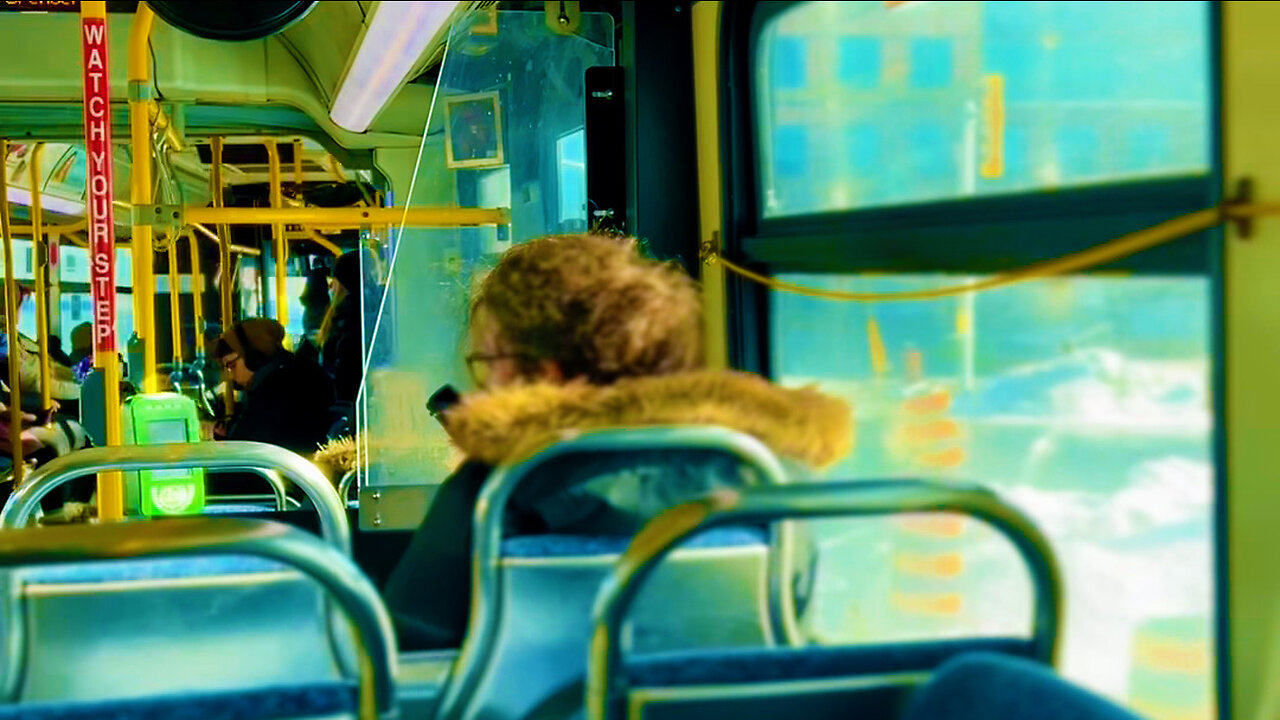Premium Only Content

Trippy Ride. Articulated bus bends its way downtown
An articulated bus, also referred to as a banana bus, bendy bus, tandem bus, vestibule bus, wiggle wagon, stretch bus, or an accordion bus, (either a motor bus or trolleybus) is an articulated vehicle used in public transportation. It is usually a single-decker, and comprises two or more rigid sections linked by a pivoting joint (articulation) enclosed by protective bellows inside and outside and a cover plate on the floor. This allows a longer legal length than rigid-bodied buses, and hence a higher passenger capacity (94–120), while still allowing the bus to maneuver adequately.
.
Articulated buses are typically 18 m (59 ft) long, in contrast to standard rigid buses at 11 to 14 m (36 to 46 ft) long.
.
Early examples of the articulated bus appeared in Europe in the 1920s. In 1938, Twin Coach built an articulated bus for the city of Baltimore; this bus, which had four axles on a 47 ft (14.33 m) long body, was only articulated in the vertical direction to accommodate steep grades. 15 examples of the "Super Twin" were built in 1948, but it was not developed further.
.
In the United States, articulated buses were imported from Europe and deployed in the late 1970s and early 1980s.
.
The main benefits of an articulated bus over the double-decker bus are rapid simultaneous boarding and disembarkation through more and larger doors, somewhat larger passenger capacity, increased stability arising from a lower centre of gravity, smaller frontal area giving less air resistance than double decker buses thus better fuel efficiency, often a smaller turning radius, higher maximum service speed, the ability to pass under low bridges, and improved accessibility for people with disabilities and the elderly.
-
 4:55
4:55
AmplifiedLIFE
1 month agoPredictions for 2025 & Beyond from Beyond
843 -
 1:43:13
1:43:13
MTNTOUGH Fitness Lab
17 hours agoMental Strength VS Physical Strength: What Elite Hunters Really Need (w/Remi Warren)
4.91K2 -
 2:27
2:27
BIG NEM
10 hours agoBalkan Trauma Explained to Africans: The Hidden Truth About Identity & History
8.93K2 -
 12:06
12:06
John Crump News
20 hours ago $0.42 earnedTwo Cases That Should Be Examined Under President Trump's Executive Order
10.5K3 -
 1:00:33
1:00:33
Trumpet Daily
19 hours ago $3.85 earnedThe Final Coup Attempt - Trumpet Daily | Feb. 11, 2025
10.8K17 -
 2:56:59
2:56:59
TimcastIRL
11 hours agoTrump Border Czar Hints He'll ARREST Leftists Aiding Illegal Immigrants w/Mark Dubowitz | Timcast IRL
238K249 -
 41:14
41:14
The White House
9 hours agoPresident Trump Greets and Welcomes Marc Fogel Back to The United States
117K54 -
 6:48:41
6:48:41
Akademiks
11 hours agoKendrick Lamar performs at the Superbowl. Does NOT LIKE US. Now projected to sell 230K! Drake done?
157K15 -
 5:12:34
5:12:34
MyronGainesX
13 hours ago $33.09 earnedChat With Pearl, Tucker vs Piers, Shopify Cancels Ye, FBI leaks ICE Raids, Trump On Jordan & Gaza!
105K31 -
 1:33:07
1:33:07
Man in America
20 hours ago🚨 Chlorine Dioxide: Banned, Censored & Feared by Big Pharma w/ Jonathan Otto
62.2K73